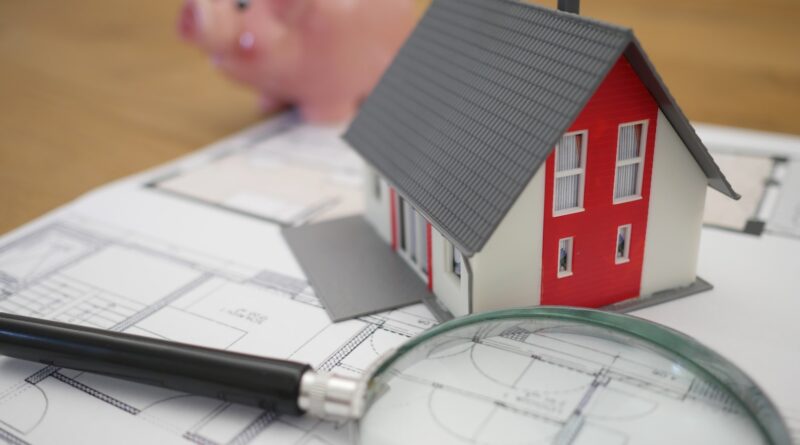Ultimate Guide to Fix and Flip Financing for Beginners: Tips and Tricks
Ultimate Guide to Fix and Flip Financing for Beginners: Tips and Tricks
Are you interested in venturing into the world of fix and flip real estate investing, but unsure of how to finance your projects? Fix and flip financing can be a complex process, but with the right knowledge and tools, it can be a profitable endeavor.
In this article, we will guide beginners through the process of fix and flip financing. We will explain the different types of financing options available, including traditional bank loans, hard money loans, and private money loans.
We will also stress the importance of understanding the costs involved, such as interest rates, origination fees, and prepayment penalties, and how they can impact your profitability.
Choosing the right financing option for your fix and flip project is crucial. We will provide tips on how to determine which option is best suited for your particular project and financial situation.
By the end of this article, you will have a better understanding of fix and flip financing and be equipped with the knowledge and tools necessary to successfully finance and execute your next project.
Types of Financing Options
some of the most common financing options available for fix and flip real estate projects. Let me give you a brief overview of each of these options:
- Traditional Bank Loans: These are loans offered by banks and credit unions that are secured by the property being purchased or refinanced. These loans usually have a longer term and lower interest rates than other types of financing options. However, the approval process can be lengthy and the requirements for approval can be strict.
- Hard Money Loans: Hard money loans are typically offered by private lenders or investment groups and are based on the value of the property being purchased or renovated. These loans have shorter terms and higher interest rates than traditional bank loans, but they can be approved much faster and with less stringent requirements.
- Private Money Loans: Private money loans are similar to hard money loans but are offered by individuals rather than investment groups. These loans are usually more flexible and can be negotiated to suit the needs of both the borrower and the lender.
- Home Equity Loans: Home equity loans are loans that are secured by the equity in a borrower’s existing property. These loans can be a good option for fix and flip investors who already have a property with equity that they can use as collateral.
- Credit Cards: Credit cards can be used to finance fix and flip projects, but they typically have high-interest rates and can be risky if not used responsibly.
Each financing option has its advantages and disadvantages, and it’s important to carefully consider your financial situation and project needs before deciding on the best option for you.
Understanding the Costs Involved
Understanding the costs involved in a fix and flip real estate project is crucial to determining the potential profitability of the project. Here are some of the main costs involved in a fix and flip project:
- Acquisition Costs
- These are the costs associated with acquiring the property, including the purchase price, closing costs, and any other fees associated with the purchase.
- Rehab Costs
- These are the costs associated with renovating and improving the property, such as materials, labor, permits, and inspections.
- Holding Costs
- These are the ongoing costs of owning the property while it is being renovated and marketed for sale. These costs can include property taxes, insurance, utilities, and mortgage payments.
- Selling Costs
- These are the costs associated with selling the property, including real estate agent commissions, marketing expenses, and closing costs.
It’s important to carefully estimate and budget for each of these costs in order to determine the potential profitability of the project. Keep in mind that unexpected costs may arise during the course of the project, so it’s also important to have a contingency plan in place.
By accurately estimating and controlling the costs involved in a fix and flip project, investors can maximize their profits and minimize their risks.
Choosing the Right Financing Option for You
Choosing the right financing option for your fix and flip project is crucial to the success of your investment. Here are some factors to consider when choosing a financing option:
- Interest rates: The interest rate on the loan will determine the overall cost of financing the project.
- Repayment terms: The repayment terms of the loan will determine the length of time you have to pay back the loan.
- Approval requirements: The approval requirements for each financing option can vary significantly, so it’s important to consider your credit score, income, and other factors that may impact your eligibility for each option.
- Loan amount: The amount of money you need to borrow will also impact your choice of financing option.
- Flexibility: Some financing options may be more flexible than others, allowing you to negotiate terms that are better suited to your project and financial situation.
Pros and cons of each financing option
When considering each financing option, it’s important to weigh the pros and cons of each option. Here are some pros and cons of the most common financing options for fix and flip projects:
Traditional Bank Loans
Pros: Lower interest rates, longer repayment terms, and potential for larger loan amounts.
Cons: Strict approval requirements, lengthy approval process, and inflexible repayment terms.
Hard Money Loans
Pros: Faster approval process, less stringent approval requirements, and flexible repayment terms.
Cons: Higher interest rates and shorter repayment terms.
Private Money Loans
Pros: More flexible terms, potential for lower interest rates, and a quicker approval process.
Cons: Typically lower loan amounts and higher interest rates than traditional bank loans.
Home Equity Loans
Pros: Potential for lower interest rates, and no need to qualify for the loan based on the property being purchased or renovated.
Cons: Risk of losing your home if you default on the loan, and fees associated with obtaining the loan.
Credit Cards
Pros: Convenience, and no need for collateral.
Cons: High-interest rates, potential for overspending, and risk of damaging your credit score if not used responsibly.
By carefully considering each financing option and weighing the pros and cons of each, you can make an informed decision on the best option for your fix and flip project.
Tips for Securing Financing
Securing financing for your fix and flip project can be challenging, but there are some tips you can follow to improve your chances of success. Here are some tips for securing financing for your fix and flip project:
- Improve your credit score: A higher credit score can make it easier to secure financing and can also result in lower interest rates. You can improve your credit score by paying bills on time, reducing debt, and correcting any errors on your credit report.
- Build relationships with lenders: Building relationships with lenders can help you secure financing for your fix and flip project. Attend networking events and establish a rapport with potential lenders by sharing your business plan and demonstrating your knowledge of the real estate market.
- Create a strong business plan: A strong business plan can help you demonstrate your expertise and your plans for the project, including your strategy for rehabbing the property and your timeline for completion. Be sure to include financial projections and a contingency plan for unexpected expenses.
- Provide detailed information on the property and the project: Providing detailed information on the property, including the purchase price, estimated rehab costs, and the potential sale price can help lenders evaluate the potential profitability of the project. Be sure to provide detailed information on your experience and qualifications as well.
By following these tips, you can improve your chances of securing financing for your fix and flip project. Remember to do your research, weigh your options carefully, and work with lenders who are experienced in financing fix and flip projects.
Tricks to Maximize Profitability
Maximizing profitability in a fix and flip real estate project requires careful planning and execution. Here are some tricks to help you maximize your profits:
- Finding the right property: Finding the right property is critical to the success of your fix and flip project. Look for properties that are undervalued, have good potential for appreciation, and are located in desirable neighborhoods.
- Keeping renovation costs low: One of the keys to maximizing profitability in a fix and flip project is to keep renovation costs low. Be sure to create a detailed renovation plan and stick to a budget. Look for ways to save money, such as doing some of the work yourself or using recycled materials.
- Selling the property quickly: The longer it takes to sell the property, the more money you will lose in holding costs. Be sure to price the property competitively and stage it for sale to make it more attractive to potential buyers.
- Negotiating a good deal: Negotiating a good deal on the property can help you maximize your profits. Be sure to do your research and come prepared to negotiate. Look for properties that have been on the market for a while or that have motivated sellers who are willing to negotiate on price.
By following these tricks, you can maximize profitability in your fix and flip project. Remember to focus on finding the right property, keeping renovation costs low, selling the property quickly, and negotiating a good deal. With careful planning and execution, you can turn a fix and flip project into a profitable investment.
Start building your wealth
Are you ready to take your first step towards a profitable real estate investment? Fix and flip projects can be an excellent way to generate income, build wealth, and gain experience in the real estate industry.
While it may seem daunting to embark on a fix and flip project, with the right mindset and knowledge, you can take action with confidence.
Starting your fix and flip project with confidence requires careful planning, research, and a willingness to take calculated risks. With the right mindset and knowledge, you can turn your fix and flip project into a profitable real estate investment.
So take action today and start building your wealth through real estate!


